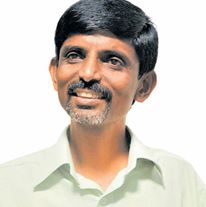National Youth Policy: Expectations of Indian Youth


India’s National Youth Policy 2020 (or 2021?) was expected to be released by the end of 2020 or at least by the 12th of January, that is on the eve of National Youth Day/National Youth Week, 2021. However, there has been no update on the matter. One could assume that this delay is due to COVID-19. Even if the policy is released, we hardly know whether it will come out as a draft open to public debate or will go for direct approval.
The reason for this suspicion is that India is experiencing an era of ordinances. Discussions and debates have been cancelled at all levels citing COVID-19 as a reason. This period could be regarded as a period of setback for democracy, not only in India but also across the globe. In addition, the pandemic has provided a good pretext to abandon discussions in legislative assemblies. Enacting laws without any democratic deliberations is fatal to real democracy. Our democracy today finds itself in the most vulnerable condition as people remain totally passive and powerless after casting their votes in elections.
If the current Union Government really wants the youth and other citizens of India to participate in the formulation of Youth Policy, the draft should be brought out in regional languages-at least, in the 22 languages listed in the Eighth Schedule of the Indian Constitution. However, the hard fact remains that no policy or law, including the new Education Policy, is being published in regional languages. The Center should not embarrass itself like this over and over again for this very same reason. Let the youth policy be published in local languages at the outset.
More than a year ago, the United Nations Volunteers (UNV), India was given the responsibility of drafting the Youth Policy 2020. Being a global organization, UNV works on a broader human rights framework. Being a part of the United Nations Organization, it is quite sensitive to the issues of sustainable development and inclusion. The United Nations has also considered youth as a precarious category of the population and has mentioned this in its pledge to “Leave No One Behind” in achieving the 2030 “Sustainable Development Goals”. This is why we can expect a good youth policy draft from UNV India. However, many are of the opinion that the Center has compelled the UNV to edit the draft several times.
The people of this country, especially the youth, should be involved in framing a National Youth Policy. The Boston Consulting Group was entrusted with the task of consulting young people in this regard. It is said that the group has collected aspirations of youth online. One can easily guess the class of youth who can fill such online forms. Direct consultations have been held with young people at four venues in India. As far as South India is concerned, only one such meeting was held in Chennai in which just over 100 local youth participated. There is much expectation by the youth that the revised policy will address the issue of this large population and also address the crisis youth are bound to face post-pandemic.
The youth have to be seen beyond just being the instruments of nation-building. Since the youth are in big number, we claim that, “they are the nation”. A nation’s wellbeing lies in the wellbeing of the youth. In fact, 20% of the world’s youth live in India. According to the Youth Policy of India 2014, persons aged 15 to 29 years are regarded as youth. In India, total population of this age group is approximately 400 million.
The Pandemic has cast the future of the youth into uncertainty. Education, employment, and relationship-building (be it friendship or entry into family life) are the three major turning points in the lives of late adolescents and young adults. Our education system has been increasingly privatized and has thus prevented youth belonging to marginalized communities from pursuing higher education. The State seems to be following a trend in withdrawing its support to education by reducing scholarships to students from marginalized communities. The digital divide that we were talking about is very much visible now. Young people from poor families who cannot afford proper devices and data packages are in trouble. The country’s unemployment rate, which had previously risen to about 14% (maximum in the last 45 years) in the pre-COVID-19 period, has now crossed 27%. Many young people lost their jobs during the pandemic and there is no guarantee that youth newly entering the workforce will get jobs in the near future. Livelihood opportunities in the informal sector is also diminishing.
The Youth Policy should also deal with physical and mental health status of young people. The National Crime Bureau reports that about 40% of the total death by suicides in the country fall in the age group of 15 to 29 years. Studies show that about 30% of young people in our country are not mentally healthy. COVID-19 has only intensified this pressure particularly on young women. According to the Comprehensive National Nutrition Survey 2016-18, 20% of young people (15-19 years old) in the country showed stunted growth (moderate or severely less body mass index) and 28% of young people (10 to 19 years old) suffered from anemia. 25% of people between the ages of 10 and 19 years suffered from health problems arising due to deficiency of micro-nutrients. In the post-lockdown, while the economically poor are struggling to find work, the youth belonging to such families can hardly improve their nutritious food intake. The Youth Policy should address these issues on a comprehensive basis and proper programs need to be formulated to improve the health condition among the youth.
The Exposure Draft National Youth Policy 2012 was a milestone in framing youth policy perusing youth beyond potential beneficiaries of sports and cultural events. This draft alongside the National Youth Policy 2014 introduced the concept of the Youth Development Index (YDI) and also considered youth as a heterogenous group. In doing so, they put forth the need to study the different social, economic, geographical and cultural backgrounds of youth and the ways of empowering them. YDI uses a few indicators like: health (% assisted/institutional delivery, life expectancy at age 15 years, % youth-non-anemic, Body Mass Index), education (Gross Enrolment Ratio, level of education attained etc.), work (work participation rate, available days of work in a year per youth), basic amenities (access to safe water, type of house, access to electricity, toilet facility), youth amenities (information, communication, technology) and participation (percentage of youth aged 18 years and above who have enrolled as a voter etc.). In 2016, India’s YDI stood at 0.548 (1 is considered to be a measure of maximum development) and India was ranked 133rd out of 183 countries. The Rajiv Gandhi National Institute of Youth Development has come out with an improved method of assessing youth development and has included indicators of inclusion and social justice. Its survey reports are to be properly used while framing the youth policy.
Instead of improving youth empowerment programs, the State is focusing on bringing in various draconian laws to control civilians. Increasing the age of marriage for girls in order to reduce the Maternity Mortality Rate (MMR) is a good example in this regard. The reason for maternal deaths is malnutrition and lack of adequate medical facilities. Without addressing this, increasing the age of marriage only, may not help reach the goal of reducing MMR. The issue of marriage is something related to the youth and yet increasing age of marriage has been initiated by the Ministry of Women and Child Development without involving Ministry of youth affairs. The coordination between youth affairs and other ministries is very much lacking.
As our constitution aspires, the youth are capable of fostering friendships, love and relationships that go beyond borders; they can embrace new worldviews and can build a new society. They have the potential to build harmonious relationship with nature and fellow beings thus creating a space for coexistence and wellbeing for all. For this, they have to participate at all levels of decision-making right from family to international-level organizations. This is the right time to figure out the social, economic and cultural rights of the youth and support them to take informed decisions. Let us hope that the draft National Youth Policy will throw light on all these concerns. Happy National Youth day and Youth Week.
